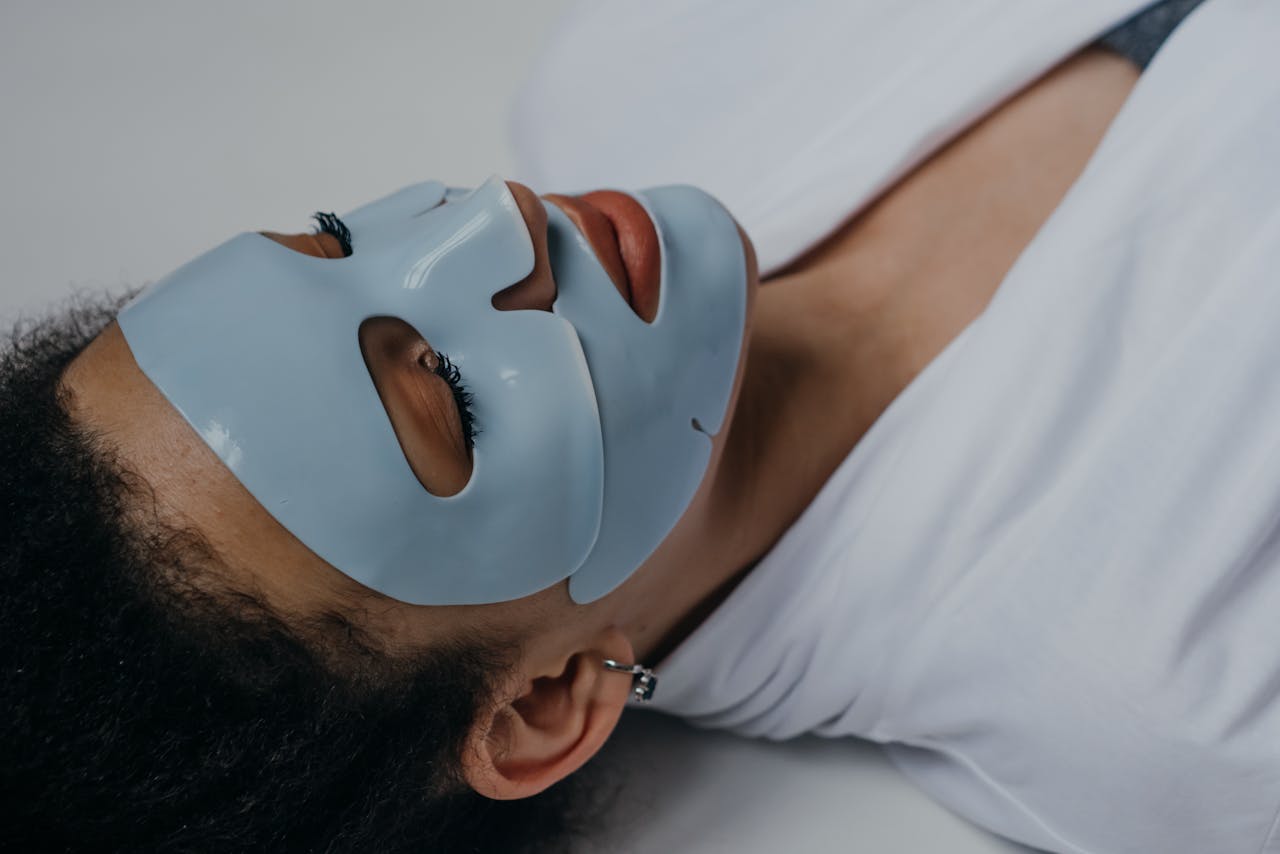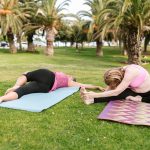Struggling with oily skin can feel overwhelming, but there’s hope in your kitchen! This DIY face mask recipe invites you to transform simple staples into effective skin-soothing solutions. Say goodbye to commercial products filled with chemicals and embrace natural ingredients that cater specifically to oily skin. Discover how you can harness the power of what you already have at home for a refreshing, rejuvenating experience. Your skin deserves it, and so do you!
Benefits of DIY Face Masks for Oily Skin
When it comes to oily skin care, DIY skincare solutions offer unique benefits that are often more tailored and effective than commercial products. One of the primary advantages is the ability to customise face masks with natural ingredients that specifically target excess oil production. Ingredients like clay and tea tree oil are renowned for their ability to absorb oil and reduce shine, while also being gentle on the skin.
Also read : Crafting Your Unique Yoga Journey: Customized Routines for Ultimate Stress Relief
Unlike many commercial products, which may contain harsh chemicals, DIY face masks allow you to control exactly what goes on your skin. This is particularly beneficial for those with sensitive skin, as it reduces the risk of irritation and allergic reactions. Moreover, DIY skincare is often more cost-effective, allowing you to experiment with different ingredients without breaking the bank.
Natural ingredients not only help manage oiliness but also contribute to overall skin health. For instance, honey is a natural humectant that helps maintain moisture balance, while lemon juice is rich in vitamin C, promoting a brighter complexion. By incorporating these ingredients, DIY face masks can offer a holistic approach to skincare, addressing multiple concerns simultaneously.
Additional reading : Finding the Perfect Fabric for Your Body Type: A Guide to Selecting Tailored Suits
Ultimately, the benefits of face masks crafted at home extend beyond oil control, offering a personalised and sustainable skincare routine.
Essential Kitchen Ingredients
In the realm of natural skincare, your kitchen might just be a treasure trove of ingredients perfect for crafting homemade face masks. Commonly used kitchen ingredients like oatmeal, yogurt, and cucumber are renowned for their skin-friendly properties. Oatmeal acts as a gentle exfoliant, absorbing excess oil while soothing the skin. Yogurt, rich in lactic acid, offers mild exfoliation and helps in maintaining the skin’s pH balance. Cucumber, with its high water content, provides a cooling effect and helps reduce inflammation.
Choosing the right ingredients for oily skin is crucial. Opt for items that balance oil production without stripping the skin of its natural moisture. For instance, using apple cider vinegar can help restore the skin’s natural acidity, while aloe vera provides hydration without adding to oiliness.
When sourcing these ingredients, freshness is key. Purchase organic products when possible to avoid pesticides and other chemicals. Store them properly to maintain their efficacy—keep perishables like yogurt and cucumber refrigerated, while dry items like oatmeal can be stored in a cool, dry place.
By incorporating these kitchen ingredients into your skincare routine, you can create effective, personalised solutions that address oily skin concerns naturally.
DIY Face Mask Recipes
Creating your own DIY face masks is a rewarding and effective way to manage oily skin. Below are some easy-to-make recipes using natural ingredients.
Recipe 1: Yogurt and Honey Mask
This mask combines yogurt and honey for a soothing treatment.
- Ingredients and Proportions:
- 2 tablespoons of plain yogurt
- 1 tablespoon of honey
- Step-by-Step Preparation Instructions:
- Mix the yogurt and honey in a small bowl until well combined.
- Apply the mixture evenly to your face, avoiding the eye area.
- Leave it on for 15 minutes.
- Rinse with warm water and pat dry.
- Benefits for Oily Skin:
Yogurt’s lactic acid gently exfoliates and balances pH levels, while honey hydrates and reduces oiliness.
Recipe 2: Oatmeal and Lemon Mask
An oatmeal and lemon mask can help absorb excess oil.
- Ingredients and Proportions:
- 2 tablespoons of ground oatmeal
- 1 tablespoon of lemon juice
- Step-by-Step Preparation Instructions:
- Combine the oatmeal and lemon juice in a bowl.
- Apply to your face, focusing on oily areas.
- Allow it to sit for 10 minutes.
- Rinse off with lukewarm water.
- Benefits for Oily Skin:
Oatmeal absorbs oil and soothes, while lemon juice brightens and tightens pores.
Application Techniques for Maximum Effectiveness
Achieving the best results from your face mask application requires attention to detail and technique. For those focusing on an oily skin treatment, these steps can enhance your skincare routine significantly.
Before applying a face mask, ensure your skin is clean and free of makeup or impurities. This allows the mask to penetrate more effectively. Use a gentle cleanser suitable for oily skin to maintain balance.
Best Practices for Applying Face Masks
- Even Application: Use a brush or clean fingertips to apply the mask evenly across your face, avoiding the eye area. This ensures consistent treatment and absorption.
- Layering: Apply a thin, even layer to avoid clogging pores or causing irritation. A thin layer is sufficient for most masks to work effectively.
Recommended Duration for Different Masks
Different masks require varying durations to work effectively. For instance, clay masks should be left on until they start to dry but not crack, typically around 10-15 minutes. Hydrating masks like yogurt and honey can remain for up to 20 minutes.
Tips for Enhancing Absorption
To enhance absorption, gently steam your face before applying the mask. This opens pores and allows active ingredients to penetrate more deeply, maximising the mask’s benefits.
Safety Tips and Precautions
When embarking on a DIY skincare journey, understanding skincare safety is paramount. Natural ingredients, while beneficial, can sometimes cause allergic reactions. It’s crucial to be aware of potential allergies, especially when using common kitchen items like lemon juice or honey.
Potential Allergies to Kitchen Ingredients
Kitchen staples can be surprisingly potent. For instance, lemon juice, while excellent for brightening, can cause irritation in sensitive individuals. Similarly, honey, though generally safe, may trigger reactions in those with bee-related allergies.
How to Do a Patch Test
To prevent unexpected reactions, always perform a patch test. Apply a small amount of the DIY mask to a discreet area of your skin, such as behind the ear or on the inner wrist. Wait 24 hours to observe any adverse effects. If redness or irritation occurs, refrain from using the mask on your face.
When to Avoid Certain Ingredients
Certain ingredients should be avoided based on individual skin conditions. If you have a history of acne, steer clear of overly oily substances. For sensitive skin, avoid abrasive exfoliants like coarse oatmeal. Always tailor your DIY masks to your specific skin needs to ensure a safe and effective skincare routine.
User Testimonials and Success Stories
Exploring user experiences with DIY face masks can provide valuable insights into their effectiveness. Many individuals have shared their skincare results, showcasing significant improvements in skin texture and oil control. These testimonials often include before and after visuals, highlighting the transformative impact of homemade masks.
One user reported that incorporating a simple yogurt and honey mask into her routine drastically reduced her skin’s oiliness and improved its overall appearance. Before using the mask, she struggled with a shiny T-zone and frequent breakouts. After consistent use, her skin appeared more balanced and less prone to acne.
Another success story comes from a user who suffered from enlarged pores and uneven skin tone. By using an oatmeal and lemon mask, she noticed a visible reduction in pore size and a brighter complexion. The before and after photos she shared depicted a remarkable difference, with smoother and more radiant skin.
These user experiences underscore the potential of DIY masks to deliver personalised skincare solutions. While individual results may vary, these success stories demonstrate the positive impact that natural ingredients can have on managing oily skin and enhancing overall skin health.
Frequency of Use for Optimal Results
Incorporating DIY masks into your skincare routine requires careful consideration of mask frequency to ensure optimal results for oily skin care.
Recommended Frequency for Using DIY Masks
For most individuals with oily skin, using a DIY face mask two to three times a week is ideal. This frequency allows the skin to benefit from the oil-absorbing and soothing properties of natural ingredients without overwhelming it.
Signs of Overuse or Irritation
Overuse of masks can lead to signs of irritation such as redness, dryness, or increased oil production. If you notice these symptoms, consider reducing the frequency of application. Your skin’s response is a crucial indicator of whether your current routine is effective or requires adjustment.
Adjusting Frequency Based on Skin Response
Everyone’s skin is unique, and it’s important to tailor your skincare routine to your individual needs. If your skin feels tight or shows signs of irritation, decrease the frequency. Conversely, if your skin tolerates the masks well and shows improvements, maintaining the current routine or slightly increasing the frequency might be beneficial. Always listen to your skin and adjust accordingly for the best results.
Common Mistakes to Avoid
When crafting DIY face masks for oily skin, avoiding common skincare mistakes is crucial for achieving desired results. Understanding how to properly prepare masks can prevent ineffective treatments and skin irritation.
Typical Errors in Mask Preparation
One frequent error is incorrect measurement of ingredients. Precise proportions ensure the mask’s efficacy. Overusing certain components, like lemon juice, can lead to skin irritation due to its acidic nature.
Misunderstanding Ingredient Interactions
Another DIY face mask error involves misunderstanding how ingredients interact. Mixing incompatible elements may reduce their effectiveness or cause adverse reactions. For example, combining honey with certain oils might increase oiliness rather than control it.
Overlooking Skin Type Variations
Failing to account for skin type variations is a common oversight. Not all oily skin behaves the same; some may be sensitive, requiring gentler ingredients. It’s crucial to tailor masks to your specific skin needs, avoiding harsh exfoliants if your skin is prone to irritation.
By being mindful of these oily skin tips, you can enhance your DIY skincare routine, ensuring masks are both effective and safe for your skin type.
Additional Natural Skin Care Tips
Enhancing your oily skin care routine involves more than just DIY masks. Incorporating natural skincare tips can significantly improve results and support a holistic skincare approach.
Complementing DIY Masks with Natural Remedies
In addition to masks, consider other natural remedies like herbal teas. Green tea, for instance, is rich in antioxidants and can be applied topically or consumed to help regulate oil production. Aloe vera gel is another excellent option for soothing and hydrating oily skin without adding excess oil.
Importance of Hydration and Diet
Proper hydration is crucial in managing oily skin. Drinking plenty of water helps flush out toxins and maintain skin balance. Additionally, a diet rich in omega-3 fatty acids, such as those found in fish and flaxseeds, can help reduce inflammation and improve skin health. Avoiding excessive sugar and processed foods can also prevent oiliness and breakouts.
Lifestyle Changes to Support Oily Skin Management
Adopting lifestyle changes can further support your skincare routine. Regular exercise enhances blood circulation, promoting a healthy complexion. Ensure adequate sleep to allow your skin to repair and regenerate. Managing stress through practices like meditation can also reduce oiliness, as stress often exacerbates skin issues.
Conclusion and Further Resources
Embarking on a journey with DIY face mask guides can be both rewarding and effective for managing oily skin. To further enhance your natural beauty routine, consider exploring additional skincare resources. These can provide deeper insights into ingredient benefits and offer a plethora of recipes tailored to your skin’s unique needs.
For those seeking to expand their knowledge, numerous online platforms and books are dedicated to natural beauty and skincare. These resources often include detailed guides on creating your own masks, as well as tips on selecting the best ingredients for your skin type.
Incorporating recommended products can also complement your DIY efforts. Look for items that align with your natural approach, such as organic clay masks or gentle exfoliants, which can enhance the effectiveness of your homemade treatments.
Experimentation is key in the world of DIY skincare. Don’t hesitate to try new recipes and adjust ingredients to find what works best for you. This not only personalises your routine but also ensures that your skin receives the most suitable care.
By leveraging these skincare resources and embracing creativity, you can craft a skincare regimen that is both effective and uniquely tailored to your needs.











